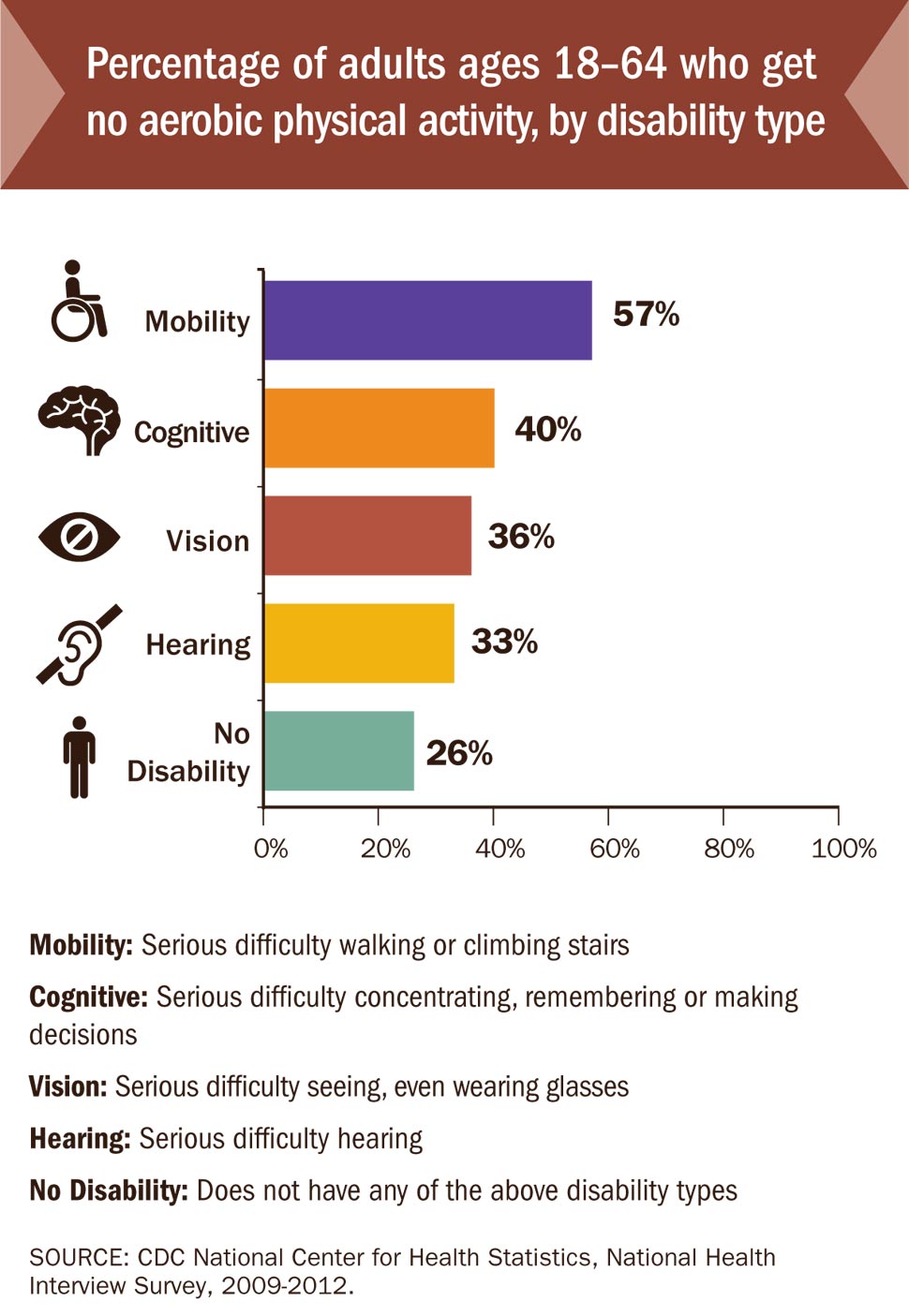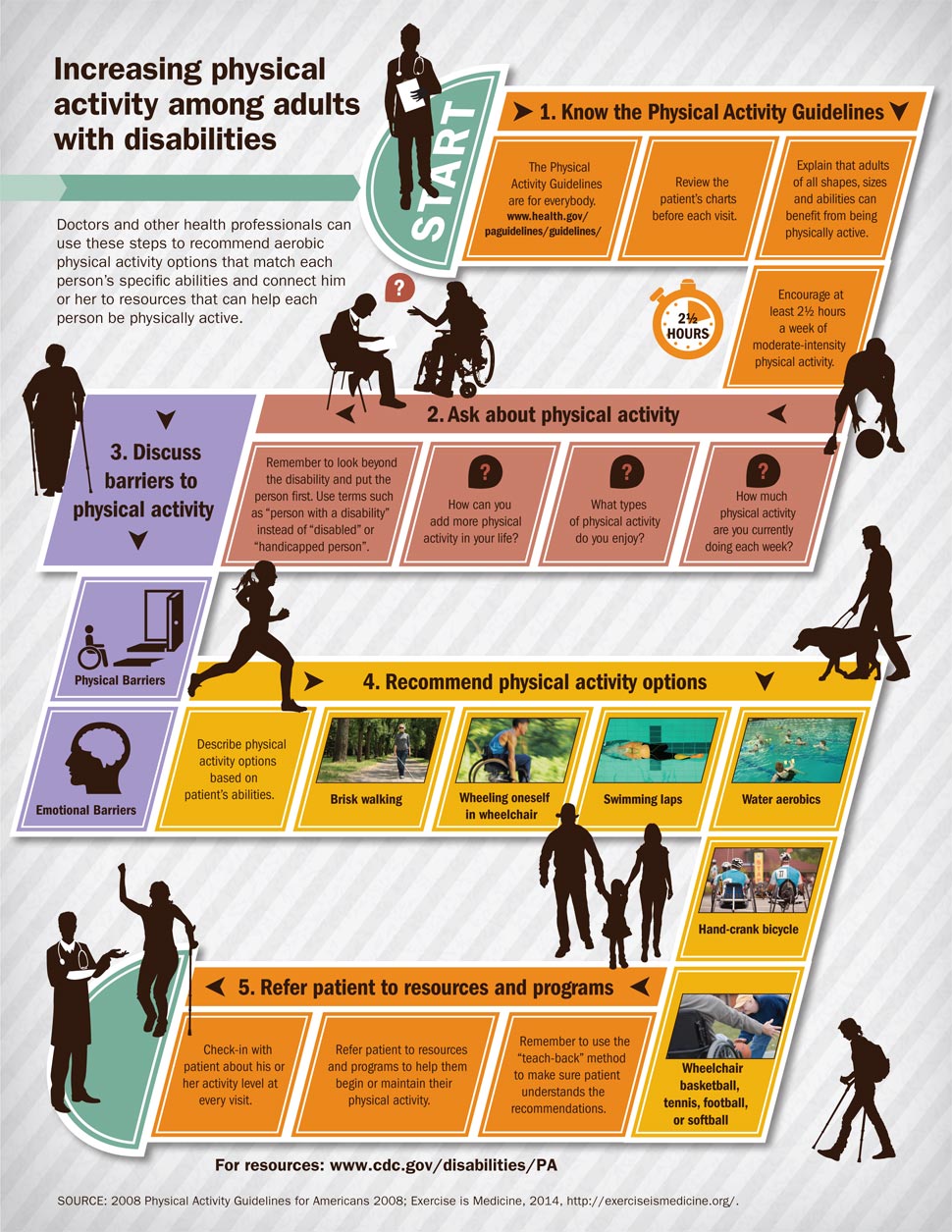Adults with Disabilities infographic
Adults with Disabilities infographic
Vital Signs

Percentage of adults ages 18-64 with disabilities who have 1 or more chronic diseases, by aerobic physical activity level
Pie Chart 1: Adults with disabilities who are inactive who report no or 1 or more chronic diseases
- 0 chronic disease: 54 percent
- 1 or more chronic diseases: 46 percent
Pie Chart 2: Adults with disabilities who are active who report no or 1 or more chronic diseases
- 0 chronic disease: 69 percent
- 1 or more chronic diseases: 31 percent

Percentage of adults 18-64 who get no aerobic physical activity, by disability type
- Mobility (Serious difficulty walking or climbing stairs): 57 Percent
- Cognitive (Serious difficulty concentrating, remembering, or making decisions): 40 Percent
- Vision (Serious difficulty seeing, even wearing glasses): 36 Percent
- Hearing (Serious difficulty hearing): 33 percent
- No Disability (Does not have any of the above disability types): 26 Percent

Increasing physical activity among adults with disabilities
START
- Know the Physical Activity Guidelines
- The Physical
- Activity Guidelines are for everybody.
- www.health.gov/paguidelines/guidelines/
- Review the patient’s charts before each visit.
- Explain that adults of all shapes, sizes and abilities can benefit from being physically active.
- Encourage at least 2½ hours a week of moderate-intensity physical activity.
- Ask about physical activity
- How much physical activity are you currently doing each week?
- What types of physical activity do you enjoy?
- How can you add more physical activity in your life?
- Remember to look beyond the disability and put the person first. Use terms such as “person with a disability” instead of “disabled” or “handicapped person”.
- Discuss barriers to physical activity
- Physical Barriers
- Emotional Barriers
- Recommend physical activity options
- Describe physical activity options based on patient’s abilities.
- Brisk walking
- Wheeling oneself in wheelchair
- Swimming laps
- Water aerobics
- Hand-crank bicycle
- Wheelchair basketball, tennis, football, or softball
- Refer patient to resources and programs
- Remember to use the “teach-back” method to make sure patient understands the recommendations.
- Refer patient to resources and programs to help them begin or maintain their physical activity.
- Check-in with patient about his or her activity level at every visit.
For resources: http://www.cdc.gov/disabilities/PA
SOURCE: 2008 Physical Activity Guidelines for Americans 2008; Exercise is Medicine, 2014, http://exerciseismedicine.org.
